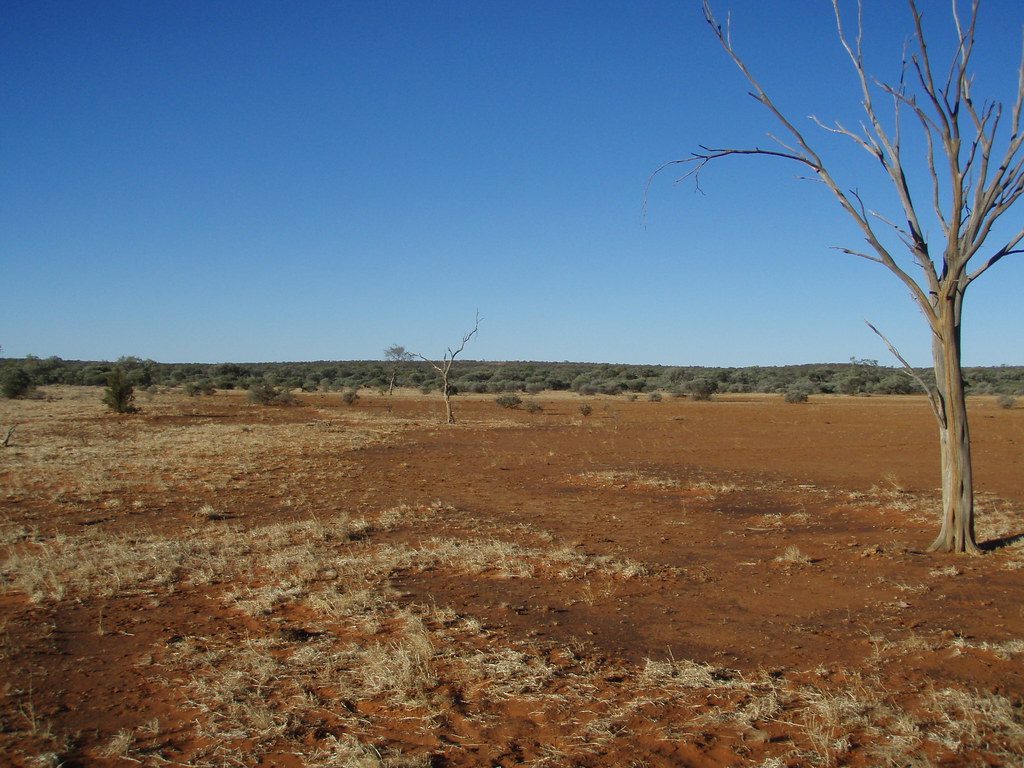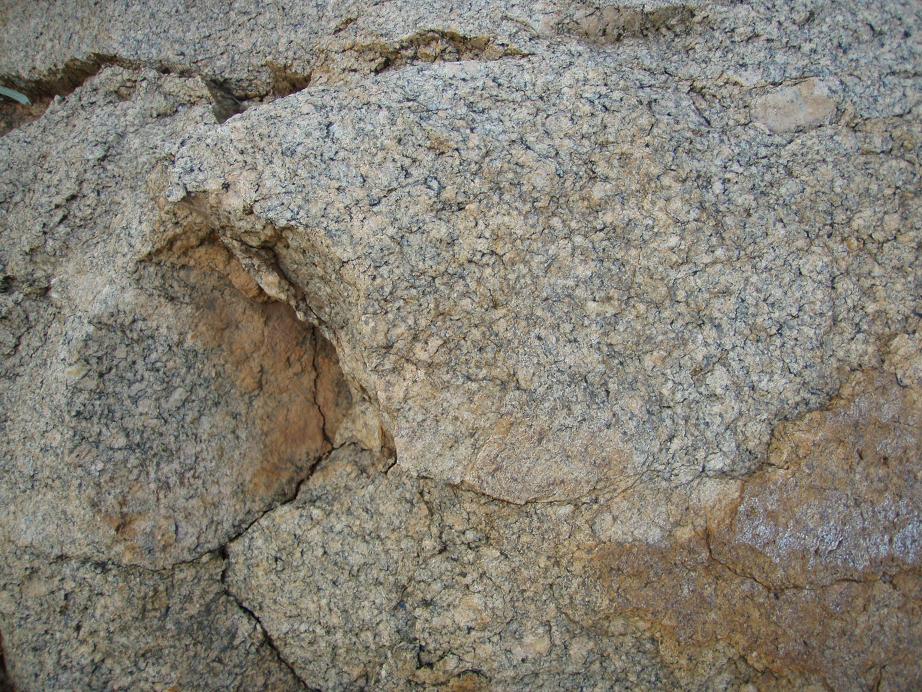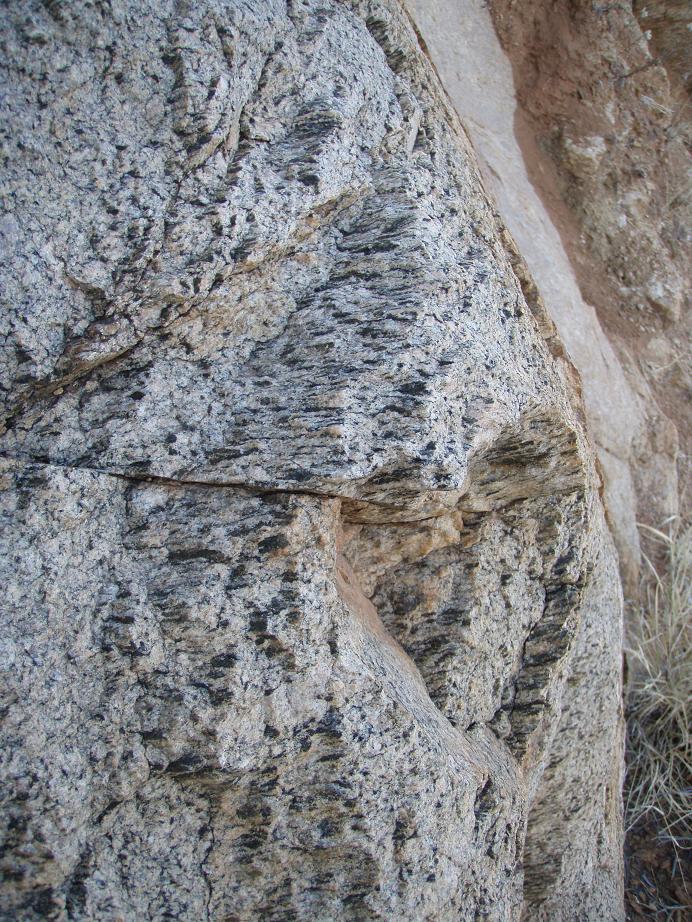Back in the middle Permian,
Astropixie tagged me with the anecdote meme. Now, I lead a pretty boring life, so it has taken me a while to think up some events worth mentioning. And eight is a lot. But I’m leaving soon, so posting a book will give y’all something to doze off while reading for the next few weeks.
1. When we came into the last station on our first field tour of this season, there was a flock of hawks circling the corral. There must have been more than 50 of them, wheeling and soaring over the cattle yards. I’d never seen hawks flock before, and the sight of so many majestic birds was amazing.
The station manager was out, so we asked his partner, who was tending to the garden, what was going on.
“Do you guys have a plague of rodents?”
“No.”
“Did the muster stir up mice or lizards or something.”
“Don’t think so. Why?”
“Well, you’ve got all these hawks up near the yards. We were just wondering if they are after something to eat.”
“Oh, yeah. The boys just castrated this year’s steers, so the hawks are probably looking for…”
We looked up in the sky again. The same hawks were flying. Only now, their curved talons looked more powerful, their hooked beaks crueler, less august. And that glint in their eyes looked considerably more antagonistic. We shifted uncomfortably from foot to foot.
“Look. I think it’s time we moved on up the road…”
2. The Thanksgiving after I finished hiking the Appalachian Trail, my brother and I had an eat-off. We weighed our plates before and after each course of the holiday feast, to determine who was the greater glutton. Although months of binge-and-fast eating had prepared my digestive system for the contest, I chose to rely on strategy as well as bile.
Knowing that my brother did not enjoy eating sweet potatoes, I went for the normal mash early, so that we rapidly demolished that and the turkey. With the mash, bird, and cranberry sauce depleted, I then turned to the orange root, while he was forced to consume Mom’s super filling whole-meal breadrolls. As they were a bit dry, he had to fill precious stomach space with water.
While I won the battle, I lost the war. He continued to grow into his college football O-line body and has soundly eaten me under the table every time since. I think he learned a lesson, though, as he also taught himself to cook, and he is now by far the most accomplished chef in the family.
3. In the second year of my PhD, I went to the Kimberlite Conference in Cape Town, along with several other students in our research group. A couple of us checked out the Lonely Planet guide for things to see. We are all of an age where the anti-apartheid leaders were childhood heroes of ours, and we realized that the diocese over which Archbishop Desmond Tutu presided was near our hostel, and that we would be in town for Easter Sunday.
Figuring that a sermon by one of the great moral crusaders of our time might be worth getting up in the morning for, we set our alarm clocks to hangover-banishing time, became Anglican for the day, and rocked up for the Easter Sunday Service. After doing all the standing up and sitting down whenever everyone else did, we eventually realized that the proceeding were being led by a boring old white guy who bore very little resemblance to the great Archbishop.
The white guy proceeded to give the most boring sermon that I have ever heard in any house of worship on this entire planet. He talked about fidelity to the church, and the important of obedience, and the danger of individuality and of questioning authority. He did not mention the freedom struggle, the new government, or even the historic Good Friday agreement signed three days before.
We stuck out the whole thing, partly because not even I am game enough to walk out of an Easter Service in a strange town, and partly because we clung to the forlorn hope that this guy was the Anglican version of a warm-up act.
It was not until much later, as we medicated the hazardous level of boredom with some beers, that we realized that our guidebook was out of date, and that the Archbishop traded in the preaching gig for the chairmanship of the truth and reconciliation commission several years before.
As we sat in the fine autumn afternoon, we wondered if there might be some sort of lesson in our getting bored out of our skulls by attempting to use a religious holiday to go celebrity spotting. After a few more fine Namibian lagers, though, we stopped wondering what that lesson might be.
4. I have never been overly enthusiastic about formal education. Throughout most of my overly drawn-out academic career, I have received A’s in the classes I liked, and C’s in the ones I didn’t particularly care for. But I didn’t really care one way or the other, with a single exception.
Brown University’s geology department did not offer its own field course when I was an undergrad. Like many east coast schools, it farmed its students out to whatever western course offerings we could get accepted to. I ended up going to Cal State Hayward, partially because it was small and different, but mostly because it was cheap.
As a quiet kid who grew up in a conservative East Coast suburb, and who never lived anywhere more flamboyant than Germany, Northern California was a bit of a shock to the system. Reticent around groups of strangers at the best of times, I simply slunk into the back corner of the classroom for orientation, determined to keep my own company.
The local students knew each other already, of course, and the professor gave th5e rest of us a short introduction, even though most of the other students had taken classes with the Hayward mob before, and only two of us were from East of the Mississippi.
Finally, the professor said who I was, and where I was from, and that was all OK. Except that he then continued….
“Now Chuck here is a bit of an unusual situation. We actually had more people apply to this course than we had places, so we had to turn a few people away, and Chuck was missing several pre-requisites for this class. But I thought his application essay was somewhat amusing, and if we’re all going to stay sane for the next six weeks, we’re gonna need some comic relief. So, I decided to bring him along. As for the prereqs, since this class is graded on a curve, you can all consider his inclusion a gift to your grades.
I was absolutely stunned. Nobody had asked me to entertain anyone ever before, much less an entire crew from whom I could not escape. And the curve comment was outright insulting. As I sat there, trying to figure out how to get my jaw back up to my mouth, only one thought registered in my mind. I HAD to get an A in that course.
In the first field area, I pushed so hard that my partner got exhaustion, slipped in an Arroyo, and busted several ribs. This cut into our mapping time, and my grade for that project. But after that I started to get canny instead of simply powering through, and I earned that A by the end of the course.
It was not until years later that I realized the professor had read me like a book.
5. When I first came to Australia, I tricked myself into thinking I was prepared by looking up Australian slang on the internet. Nothing I ever saw said anything about garnishes, so when it came my turn to cook in the share house I was in, I pulled out my American lasagna recipe and headed to the store. Once at the supermarket, I though nothing of grabbing a big jug of tomato sauce, oblivious to the possibility that it could be anything other than sauced tomatoes.
We sat down to eat, and after a bite I realized that something was amiss. The cheeses were blended fine, the pasta was well cooked, but the sauce didn’t seem quite right. It was unusually sweet, and extremely vinegary. Despite these obvious warning signals, I puzzled over the strange taste for several days, before a few chats with my native housemates and a good hard look at the ingredient list finally convinced me of what should have been obvious all along; in Australia, tomato sauce is the substance that American call Ketchup.
The really scary thing, however, is that my housemates said the lasagna tasted great.
6. I was a post doc in Washington DC during the sniper attacks in 2002. I suppose that in the long run it was good for me in that my cycle commute times dropped by 5-10 minutes for the duration, improving my fitness levels, but it was stressful at the time. I really wanted to let off some steam by calling up a radio station, and request Pat Benatar’s Greatest Hit with a dedication to the scumbag who was going around shooting up parking lots. But I was too cowardly, disorganized, and lazy to follow through with that plan.
7. I love hitch hiking. I’ve thumbed down rides of up to 200 km on 4 different continents. The people who give rides always have amazing stories, as boring folks generally don’t slow down. One of the oddest rides I scored, however, was more of a business transaction than a hitch.
I was in Idaho Falls in the summer of ’94, seeing the west and getting dissed by girls in the weeks between field school and the start of fall semester. And I was in a bit of a fix.
Greyhound had previously lost everything I owned save my wallet, my journal, and half a loaf of banana bread. More seriously, my grandfather had unexpectedly passed away back east, so I needed to catch a flight leaving from Jackson WY the next day. I decided to start hoofing it, realizing that my luck might be better the farther out of town I got. While walking, I came across a woman broken down on the side of the road. She had a flat, and didn’t seem real handy with a jack and a tire iron, so I bartered a repair for a lift to the Jackson Pass junction. Despite her not being a lift-giving regular, we engaged in the ritual chit-chat anyway, and it eventually came out that I was a geology student. This piqued her interest.
“Is it true,” she asked, “That the states of California, Oregon, Washington, and Idaho are going to fall into the ocean in 1998?”
It took every ounce of self control I had (e.g. both of them) not to say, “That’s right, ma’am. We’re all going to die.”
I haven’t used my thumb in anger since getting married, aside from an emergency situation on the honeymoon. It is one of those things where I don’t realize what I’m missing until sitting down and reminiscing. But these days, I wouldn’t hitch with the baby anyway- driving a bub without a properly installed car seat is just too risky.
So, that’s seven. One anecdote to go. So in order to liven this place up a bit while I’m out, I’m gonna do something foolhardy. I know there are people- people from my real life- who occasionally read this blog. Most of these folks are generally fairly shy when it comes to commenting. But all of them have at least a little dirt on me. So here is what I will do. I’m opening up anecdote #8 to the readership. If you have some illuminating, embarrassing, or remarkable occurrence that you’d like to share, post it in comments below. I’m off tomorrow, so I can’t even screen the comments or defend myself.



